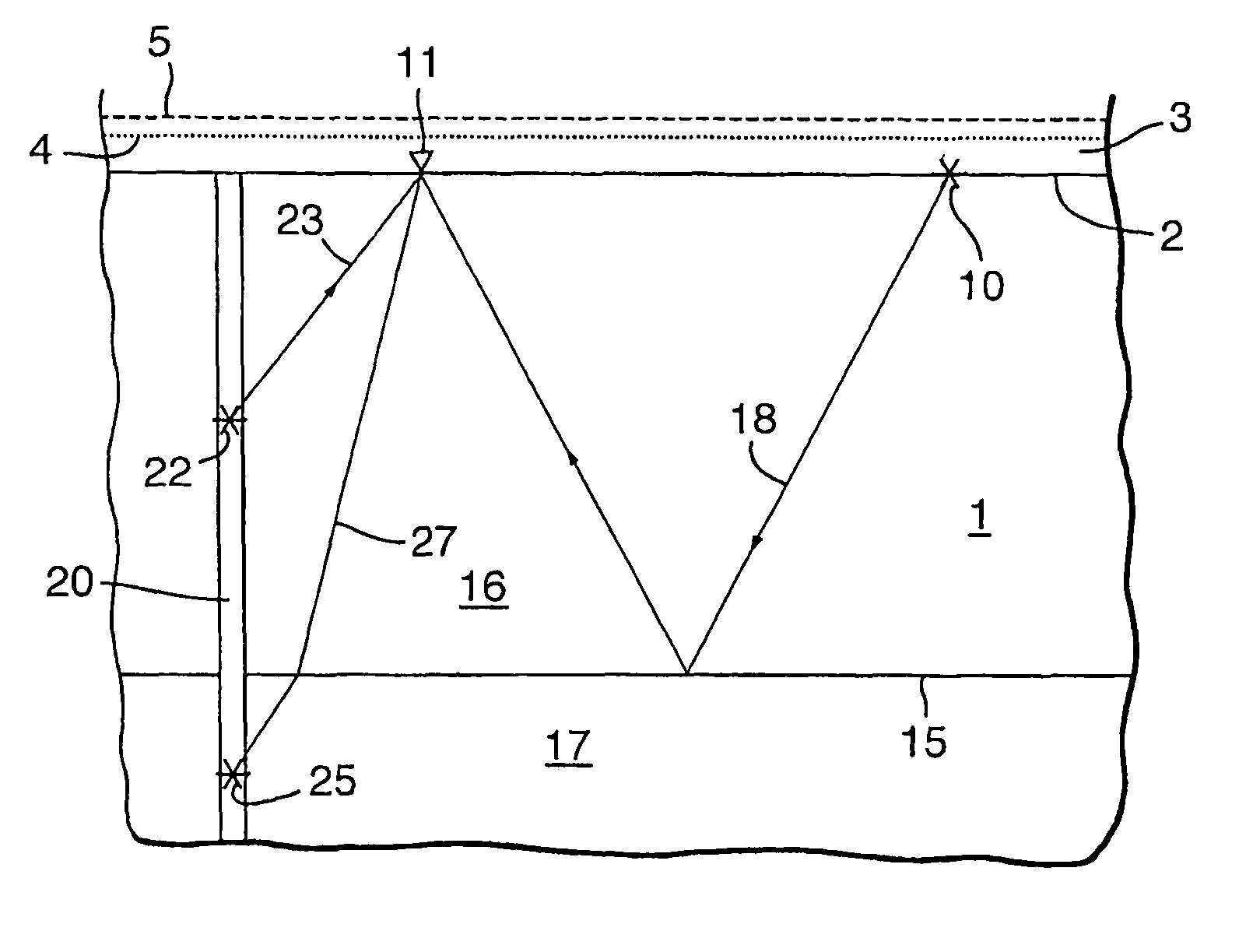Determining in-situ the relation between seismic velocity and state of stress in an underground formation
a technology of stress and seismic velocity, applied in seismology for waterlogging, instruments, reradiation, etc., can solve the problem of complex task of determining long-distance seismic velocity from sonic measurements
- Summary
- Abstract
- Description
- Claims
- Application Information
AI Technical Summary
Problems solved by technology
Method used
Image
Examples
Embodiment Construction
[0016]Described is a method of determining in-situ a relation between the seismic velocity and the state of stress in an underground formation located under a surface subjected to time-changing surface loading conditions.
[0017]An example of a surface loading condition that changes with time is the tide of the sea above the sea floor, wherein the sea floor is the surface below which the underground formation is located. Another example is a shifting sand dune in a desert.
[0018]The invention will now be described by way of example in more detail with reference to the accompanying drawing. The drawing shows schematically and not to scale a cross-section of a homogeneous underground formation illustrating paths of seismic waves. The drawing illustrates a homogeneous underground formation 1 is located below a surface 2, which is in this case a sea floor covered by a sea 3. The sea 3 has two tidal levels, a low tide shown by the dotted line 4 and a high tide shown by the dashed line 5. In...
PUM
 Login to View More
Login to View More Abstract
Description
Claims
Application Information
 Login to View More
Login to View More - R&D
- Intellectual Property
- Life Sciences
- Materials
- Tech Scout
- Unparalleled Data Quality
- Higher Quality Content
- 60% Fewer Hallucinations
Browse by: Latest US Patents, China's latest patents, Technical Efficacy Thesaurus, Application Domain, Technology Topic, Popular Technical Reports.
© 2025 PatSnap. All rights reserved.Legal|Privacy policy|Modern Slavery Act Transparency Statement|Sitemap|About US| Contact US: help@patsnap.com


